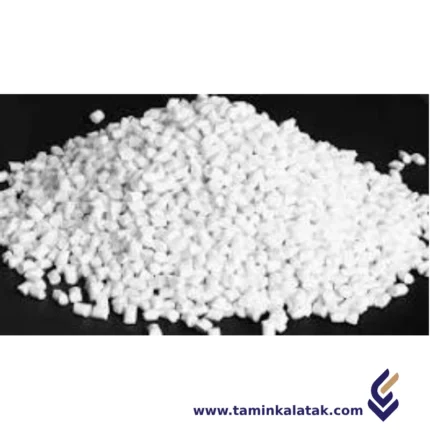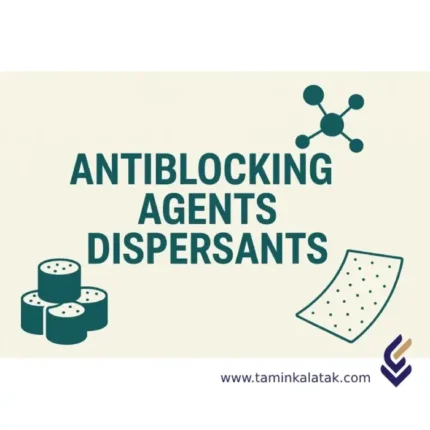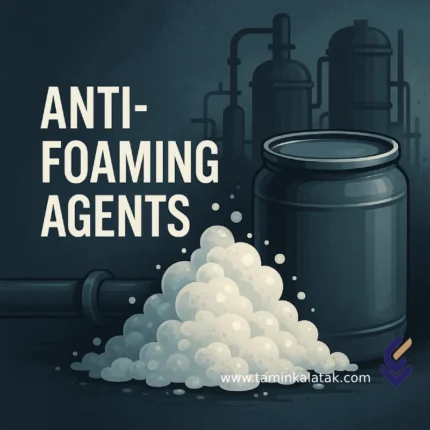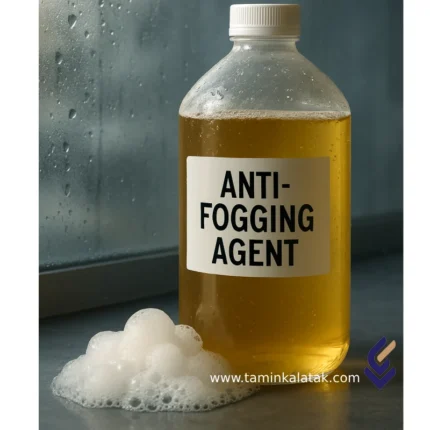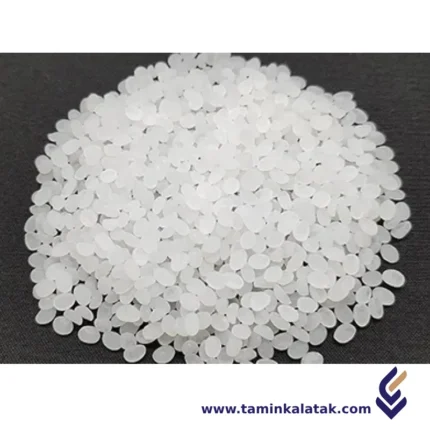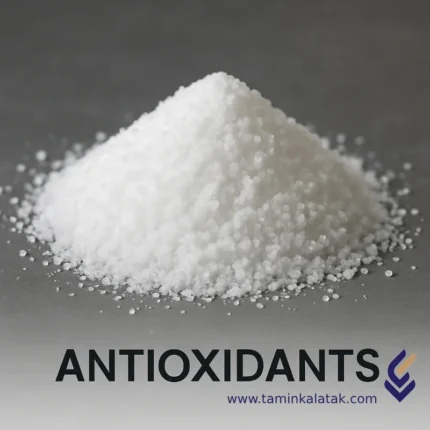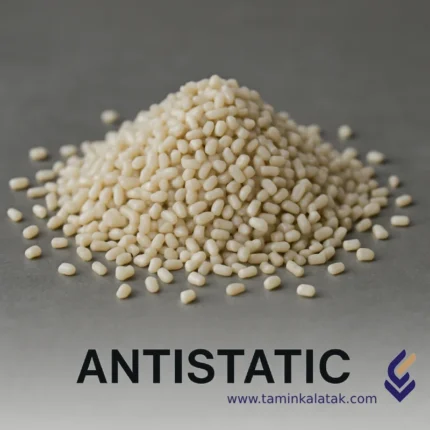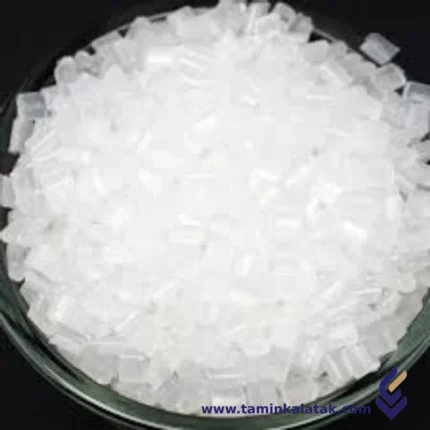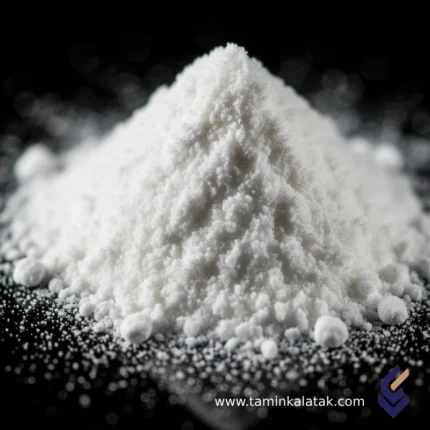Antiblock Masterbatch
Structure
The structure of antiblock masterbatch consists of a polymer carrier resin, typically polyethylene (PE) or polypropylene (PP), combined with finely dispersed inorganic antiblocking agents such as silica, talc, or calcium carbonate. These inorganic particles create a micro-rough surface on the plastic film, reducing contact area and minimizing adhesion between layers. The masterbatch is formulated to ensure uniform dispersion of the antiblocking agents, preventing film sticking while maintaining optical properties such as transparency and gloss. In addition to antiblocking agents, the formulation may include processing aids and slip additives to enhance film handling and extrusion performance. The overall composition is designed to provide effective antiblocking performance without compromising the mechanical and optical qualities of the final product.Properties
Antiblock masterbatch has several important properties that enhance the performance of plastic films and sheets. It effectively reduces blocking by introducing micro-roughness on the surface, preventing plastic layers from sticking together. The masterbatch is designed to maintain good optical properties, ensuring minimal impact on transparency and haze, which is especially important for clear films. It also improves the handling and processing of films by reducing friction, often working in combination with slip agents to enhance surface smoothness. The thermal and chemical stability of antiblock masterbatch ensures that it remains effective under high processing temperatures and various environmental conditions. Additionally, it enhances the efficiency of film unwinding, bag opening, and packaging applications without negatively affecting the mechanical strength of the polymer.Applications of Antiblock Masterbatch
- Blown Films – Used in LDPE, LLDPE, and HDPE films to prevent blocking.
- Cast Films – Applied in BOPP and CPP films for packaging and lamination.
- Agricultural Films – Helps prevent sticking in greenhouse and mulch films.
- Shrink and Stretch Wraps – Ensures smooth unwinding and handling.
- Thermoformed Sheets – Reduces adhesion in plastic trays and disposable containers.
- Flexible Packaging – Improves the usability of food and industrial packaging films.
Advantages of Antiblock Masterbatch
- Prevents Film Blocking – Reduces adhesion between plastic layers for easy handling.
- Maintains Transparency – Optimized formulations ensure minimal haze.
- Improves Processing Efficiency – Enhances film unwinding and bag separation.
- Compatible with Various Polymers – Works well with PE, PP, and other film resins.
- Enhances Surface Properties – Reduces friction when combined with slip agents.
- Cost-Effective – Reduces defects and improves production efficiency.
Disadvantages of Antiblock Masterbatch
- Potential Reduction in Clarity – High concentrations may slightly increase haze.
- Can Affect Surface Smoothness – Roughness introduced by antiblock agents may impact certain applications.
- Limited Performance in Thick Films – More effective in thin films than in rigid or thick sheets.
- Possible Interaction with Other Additives – Requires careful formulation to avoid negative effects on slip or anti-static properties.
AntiBlocking Agents & Dispersants
In the world of polymeric materials, surface quality and processing performance hold exceptional importance. As you may already know, one of the most crucial additives used to enhance these properties is antiblocking agents and dispersants. These compounds play a key role in preventing plastic film surfaces from sticking together and ensuring the uniform dispersion of pigments and other additives.
A clear understanding of their structure, applications, advantages, and limitations is essential for formulators, engineers, and manufacturers alike.
Chemical Structure of Antiblocking Agents
Antiblocking agents are generally composed of silicas (SiO₂), talc, kaolin, special polyamides, and occasionally polyethylene waxes.
In dispersants, non-ionic, amphoteric, or aliphatic surfactants are often used depending on the formulation and end-use requirements.
Common Types and Market Compositions
| Additive Type | Main Chemical Composition | Common Application |
|---|---|---|
| Silica-based Antiblocking Agent | Silicon Dioxide (SiO₂) | PE and PP Films |
| Non-ionic Dispersant | Polyacrylate or Copolymers | Water-based paints, printing inks |
Key Characteristics
Antiblocking and dispersing agents exhibit a unique set of physical, chemical, and functional properties, making them indispensable across industries such as plastic film production, paints, inks, and coatings.
Physical Properties
-
Fine particle size (typically 1–10 microns)
-
High hardness to generate micro-surface texture
-
Excellent dispersibility and process uniformity
Chemical Properties
-
High thermal stability
-
Compatibility with a broad range of polymers
-
Non-reactive with most resin systems
Environmental Stability
Next-generation biodegradable antiblocking agents are designed to meet growing environmental sustainability demands.
Applications
Plastic Films
Used in PE, PP, and PVC films to prevent surface adhesion, facilitating easy winding, unwinding, and efficient handling during production and end use.
Paints and Printing Inks
Dispersants promote even pigment distribution, significantly enhancing color uniformity and final finish quality.
Packaging and Pharmaceutical Industries
Applied to reduce surface friction in tablet packaging or pharmaceutical coatings, ensuring smoother production and handling.
Advantages
-
Improves production efficiency
-
Reduces surface adhesion in thin films
-
Enhances color brightness and clarity in water-based systems
-
Improves printing performance and color consistency
-
Saves time and energy in industrial processes
Disadvantages
-
Some antiblocking agents may reduce film transparency
-
Possible incompatibility with certain masterbatches
-
May require higher dosage levels, increasing cost
-
Can negatively affect slip properties (COF) in some cases
Conclusion: The Role of Antiblocking Agents and Dispersants
Antiblocking agents and dispersants play a vital role in optimizing the performance and quality of polymeric and chemical products.
By improving particle distribution and preventing surface adhesion, they not only increase manufacturing efficiency but also enhance the final product’s visual and mechanical properties.
From an industrial perspective, selecting the right additive must be based on the specific requirements of each process. Compounds with high thermal stability, polymer compatibility, and minimal impact on product transparency are considered the most effective choices.
Moreover, balancing economic factors with desired quality outcomes—such as avoiding excessive cost or haze—remains crucial for maintaining efficient and competitive production.
AntiFoam Agents
Anti-Foaming Agents—also known as antifoams or defoamers—are substances used to reduce or prevent foam formation in industrial and chemical processes. Excessive foam can disrupt production, reduce process efficiency, and even damage equipment; therefore, the use of anti-foaming agents is essential in many industries.
Structure of Anti-Foaming Agents
Anti-foaming agents are typically composed of surface-active compounds, mineral or silicone oils, and solid additives such as silica.
Their formulation is designed to spread rapidly across foam surfaces, collapse air bubbles, and prevent re-foaming depending on the application.
| Type of Antifoam | Main Composition | Common Applications |
|---|---|---|
| Silicone-based | Silicone oil + Silica | Chemical and petroleum industries |
| Non-silicone | Mineral oil + Emulsifiers | Food and pharmaceutical industries |
| Powder type | Solid polymer blends | Detergent powders, chemical fertilizers |
Key Characteristics of Anti-Foaming Agents
-
High surface activity: Reduces surface tension and breaks air bubbles.
-
Rapid dispersibility: Quickly spreads over foam surfaces for efficient defoaming.
-
Chemical stability: Resistant to variations in temperature and pH.
-
Non-toxic (for specific grades): Especially important in food and pharmaceutical applications.
Applications of Anti-Foaming Agents
Anti-foaming agents are used across a wide range of industries. Major applications include:
-
Food and Beverage Industry: Preventing foam formation during fermentation, sugar refining, and dairy processing.
-
Oil, Gas, and Petrochemical Industries: Reducing foam in distillation towers and fluid transfer systems.
-
Wastewater Treatment: Controlling foam in aeration basins and treatment tanks.
-
Pharmaceutical and Chemical Manufacturing: Preventing foam in reactors and filling lines.
-
Paints, Resins, and Adhesives Production: Maintaining product uniformity and appearance by eliminating foam.
Advantages of Using Anti-Foaming Agents
-
Improves production efficiency.
-
Protects industrial equipment from damage due to foam.
-
Saves time and energy in manufacturing processes.
-
Enhances final product quality.
-
Reduces production downtime caused by foam-related issues.
Disadvantages
-
May contaminate sensitive products if improperly used.
-
May require repeated addition due to evaporation or degradation.
-
Incorrect selection can cause incompatibility with the process system.
-
Some advanced formulations can be expensive.
Conclusion
Selecting the right anti-foaming agent depends on the type of industry, process conditions, and nature of the foam generated.
Using high-quality antifoams not only optimizes production efficiency but also extends equipment lifespan and ensures consistent product performance.
AntiFog Agents
Anti-Fog Agents are compounds used to prevent the formation of fog or condensation on transparent surfaces such as plastics, glass, and packaging films. These additives play a crucial role in maintaining visual clarity and preventing visibility reduction, especially in food packaging, eyewear, and plastic sheets.
Chemical Structure of Anti-Fog Agents
The chemical composition of anti-fog agents typically includes hydrophilic compounds such as polyethylene glycols, fatty acid esters, or amphoteric compounds.
These structures are designed to absorb surface moisture and prevent the formation of fine water droplets by transforming them into a uniform water layer, thereby preserving the transparency of the surface.
Key Properties of Anti-Fog Agents
-
High moisture absorption: Absorbs vapor and distributes it evenly across the surface.
-
Thermal stability: Resistant to high temperatures during thermal processes such as extrusion.
-
Odorless and tasteless: Suitable for use in food packaging applications.
-
Compatibility with various polymers: Can be blended with polyethylene (PE), polypropylene (PP), and polyethylene terephthalate (PET).
Applications of Anti-Fog Agents
| Application Area | Description |
|---|---|
| Food Packaging | Used in packaging films to prevent fog formation inside refrigerators. |
| Medical Products | Applied to protective equipment such as masks and goggles. |
| Greenhouse Panels | Enhances transparency and improves light transmission for better plant growth. |
| Lenses and Eyeglasses | Reduces fogging caused by breathing or temperature changes. |
Disadvantages of Anti-Fog Agents
-
Limited durability: Some formulations are only effective for a limited time.
-
Possible alteration of polymer properties: May slightly affect the optical or mechanical characteristics of the base material.
-
Higher cost: Typically more expensive than standard additives.
Advantages of Anti-Fog Agents
-
Improved visual quality of packaging materials.
-
Extended product shelf life by maintaining a clean, appealing appearance.
-
Environmentally friendly options available with biodegradable formulations.
-
Versatility for use across diverse and sensitive industries.
Antioxidant Masterbatch
Structure Antioxidant masterbatch
The structure of antioxidant masterbatch consists of a combination of antioxidants, a carrier resin, and sometimes additional stabilizers to enhance its effectiveness. The antioxidants, which can be primary (phenolic) or secondary (phosphite or thioester-based), work by neutralizing free radicals and decomposing peroxides that cause polymer degradation. These active components are uniformly dispersed within a carrier resin, which is selected based on compatibility with the target polymer to ensure smooth blending during processing. The carrier resin, often polyethylene (PE), polypropylene (PP), or another polymer-specific base, acts as a medium that facilitates even distribution of antioxidants throughout the plastic material. Depending on the application, the masterbatch may also contain synergistic additives like UV stabilizers or processing aids to provide comprehensive protection against thermal and oxidative degradation. Produced in pellet or granular form, antioxidant masterbatch is designed for easy incorporation into plastic formulations, improving the stability and longevity of the final product.Properties Antioxidant masterbatch
Antioxidant masterbatch possesses several key properties that enhance the stability and durability of plastics during processing and throughout their lifespan. It provides excellent thermal stability, preventing polymer degradation caused by high temperatures during extrusion, injection molding, and other manufacturing processes. The masterbatch also offers strong oxidation resistance, protecting plastics from the harmful effects of exposure to oxygen, which can lead to discoloration, brittleness, and loss of mechanical properties. It is highly compatible with various polymers, including polyethylene (PE), polypropylene (PP), polyvinyl chloride (PVC), and acrylonitrile butadiene styrene (ABS), ensuring easy dispersion and uniform protection. Additionally, it enhances processing efficiency by reducing melt viscosity fluctuations, preventing gel formation, and maintaining the integrity of the plastic material. The presence of synergistic blends of primary and secondary antioxidants further improves its effectiveness, offering long-term stability and enhanced resistance to degradation in applications exposed to heat, mechanical stress, or prolonged storage conditions.Applications of Anti-UV Masterbatch
- Agriculture: Used in greenhouse films, mulch films, and irrigation pipes to prevent UV degradation and extend lifespan.
- Packaging: Protects plastic packaging materials from UV-induced weakening, ensuring product safety and durability.
- Automotive: Applied in plastic components like dashboards, bumpers, and exterior trims to prevent fading and cracking.
- Construction: Used in outdoor plastic products such as roofing sheets, pipes, and synthetic wood to withstand prolonged sun exposure.
- Textile and Fibers: Enhances UV resistance in synthetic fabrics, geotextiles, and outdoor banners to prevent fading and degradation.
- Electrical and Electronic Components: Ensures longevity of plastic casings and insulation materials exposed to sunlight.
Advantages of Anti-UV Masterbatch
- Protects plastics from UV-induced degradation, extending product lifespan.
- Prevents discoloration, brittleness, and surface cracking in outdoor and exposed plastic products.
- Enhances thermal stability, making plastics more resistant to high temperatures.
- Compatible with a wide range of polymers, allowing for versatile applications.
- Cost-effective solution compared to using inherently UV-resistant polymers.
- Easy to incorporate into plastic formulations, ensuring uniform distribution.
Disadvantages of Anti-UV Masterbatch
- May slightly alter the color or transparency of clear plastic products.
- Effectiveness depends on the concentration and type of UV stabilizer used.
- Can increase production costs compared to non-UV-stabilized plastics.
- Prolonged exposure to extreme UV conditions may still lead to gradual degradation over time.
- Some UV stabilizers may have limited efficiency under very high-temperature conditions.
AntiOxidants
Antioxidants are compounds used across polymer, food, pharmaceutical, and many other industries to prevent oxidation. In the polymer industry, these substances play a crucial role in prolonging lifespan, preserving quality, and maintaining performance of polymers under harsh environmental conditions.
Structure of Antioxidants
Antioxidants are generally classified into two main categories:
-
Primary Antioxidants (Phenolic Type):
Examples include BHT and Irganox, which inhibit free radicals, thereby preventing the degradation of polymer chains. -
Secondary Antioxidants (Phosphite or Thioester Type):
Examples include Irgafos, which react with peroxides formed during the oxidation process, neutralizing them effectively.
The chemical structure of antioxidants typically consists of phenolic rings or phosphite groups that react with free radicals or peroxides to prevent further oxidation.
Characteristics of Antioxidants
-
Excellent heat resistance
-
High thermal and oxidative stability
-
Non-volatile under processing conditions
-
Help in preserving color and appearance of polymers
-
Compatible with most polymers such as PE, PP, PS, and PA
Applications of Antioxidants
Antioxidants are widely utilized in various industries, including:
✅ Plastics Industry: To increase the service life of plastic products and prevent brittleness.
✅ Food Packaging: To prevent fat oxidation and maintain flavor stability.
✅ Automotive Industry: To stabilize plastic components exposed to engine heat.
✅ Household & Electronics: To provide UV and thermal resistance for extended durability.
✅ Medical & Pharmaceutical Fields: To protect oxidation-sensitive drugs from degradation.
Disadvantages of Antioxidants
-
Some antioxidants may migrate to the surface of the material over time.
-
The production or import cost of certain advanced grades can be relatively high.
-
Potential chemical incompatibility with other additives in complex formulations.
Advantages of Antioxidants
✅ Extend the lifespan of polymeric materials and reduce replacement costs.
✅ Preserve mechanical, optical, and aesthetic properties over time.
✅ Improve processability of polymers under high-temperature conditions.
✅ Can be combined with other additives such as UV stabilizers or antistatic agents.
✅ Offer a wide range of options for different environmental and performance requirements.
Antioxidants / Anti-aging Agents
Types of Antioxidants
- Vitamins:
- Vitamin C: Found in fruits and vegetables, it helps protect cells from damage and supports the immune system.
- Vitamin E: Found in nuts, seeds, and vegetable oils, it protects cell membranes from oxidative damage.
- Minerals:
- Selenium: Found in nuts, seafood, and meats, it helps prevent cell damage and supports immune function.
- Zinc: Found in meat, shellfish, and legumes, it plays a role in immune function and cell repair.
- Polyphenols:
- Flavonoids: Found in fruits, vegetables, tea, and wine, they have strong antioxidant properties.
- Resveratrol: Found in grapes, red wine, and peanuts, it has been shown to have anti-aging effects.
- Other Compounds:
- Coenzyme Q10 (CoQ10): Found in meat, fish, and nuts, it supports energy production and acts as an antioxidant.
- Alpha-lipoic acid (ALA): Found in spinach, broccoli, and potatoes, it helps regenerate other antioxidants and has anti-aging properties.
Applications of Antioxidants
- Skincare Products: Used in creams and serums to reduce signs of aging, such as wrinkles and fine lines.
- Dietary Supplements: Taken to boost antioxidant levels and support overall health.
- Food Additives: Used to preserve food and prevent oxidation.
- Medical Treatments: Used in therapies to manage oxidative stress-related conditions.
Health Benefits
- Reduced Risk of Chronic Diseases: Antioxidants help lower the risk of diseases such as heart disease, cancer, and neurodegenerative disorders.
- Improved Skin Health: They help maintain skin elasticity and reduce damage from UV exposure.
- Enhanced Immune Function: Antioxidants support the immune system and help the body fight off infections.
- Slowed Aging Process: By neutralizing free radicals, antioxidants can slow down the aging process and promote healthier aging.
Safety Considerations
- Dosage: It's important to consume antioxidants in moderation, as excessive intake can have adverse effects.
- Interactions: Some antioxidants may interact with medications, so it's best to consult a healthcare provider before starting any new supplement.
AntiStatic Agents
Antistatic Agents are compounds added to polymers and polymer-based materials to prevent the buildup of electrostatic charges. These additives play a vital role in improving safety, product quality, and production efficiency. Their use is especially common in packaging, electronics, automotive, and pharmaceutical industries.
Structure of Antistatic Agents
Antistatic agents are generally divided into two main types:
-
Internal Antistatic Agents:
These are incorporated directly into the polymer matrix during processing and become part of the polymer structure. -
External Antistatic Agents:
These are applied to the surface of the final product and gradually migrate to the surface over time.
These compounds often contain polar functional groups such as ethoxylates, amines, carboxylic acids, or hydrophilic copolymers, which attract environmental moisture and promote surface electrical conductivity.
Characteristics of Antistatic Agents
-
Prevent the accumulation of electrostatic charge
-
Reduce dust attraction on plastic surfaces
-
Improve safety during production by preventing electrostatic discharge (ESD)
-
Suitable for polymers such as polyethylene (PE), polypropylene (PP), polystyrene (PS), and PVC
-
Exhibit good chemical and thermal stability under most processing conditions
Applications of Antistatic Agents
✅ Electronic Packaging: Prevent electrostatic discharge (ESD) in sensitive components
✅ Plastic Films: Prevent sticking and dust buildup
✅ Pharmaceutical and Food Industries: Reduce risk of contamination and particle adhesion
✅ Automotive and Household Products: Enhance surface appearance and safety
✅ Textile and Fiberglass Industries: Minimize electrostatic charge in synthetic fibers
Disadvantages of Antistatic Agents
-
Reduced effectiveness in dry or low-humidity environments
-
Possible excessive migration to the surface, leading to staining
-
Potential negative impact on adhesion or printability in certain applications
-
In some cases, reapplication or performance renewal may be required
Advantages of Antistatic Agents
✅ Enhance safety during manufacturing and product use
✅ Reduce damage to sensitive electronic equipment
✅ Improve aesthetic and surface quality of plastic products
✅ Facilitate handling, packaging, and storage of materials
✅ Can be combined with other additives such as antioxidants or UV stabilizers for multifunctional performance
Antistatic Masterbatch
Structure
The structure of antistatic masterbatch consists of a polymer carrier resin combined with active antistatic agents. The carrier resin is chosen based on compatibility with the target plastic, such as polyethylene, polypropylene, or polystyrene, ensuring uniform dispersion during processing. The antistatic agents can be ionic or non-ionic compounds, often including ethoxylated amines, quaternary ammonium salts, or glycerol esters, which help in reducing surface resistivity. These agents migrate to the surface of the plastic over time, attracting moisture from the environment to dissipate static charges. Some formulations also include synergistic additives to enhance long-term performance or to provide immediate static dissipation. The concentration and type of antistatic agent determine the efficiency, duration, and application suitability of the masterbatch, making it a versatile solution for various industries such as packaging, electronics, and automotive components.Properties
Antistatic masterbatch possesses several key properties that make it effective in reducing static electricity in plastic materials. It has a controlled rate of migration, allowing the antistatic agents to move to the surface over time and attract moisture to dissipate static charges. The masterbatch is designed to be compatible with a wide range of polymers, ensuring uniform dispersion without affecting the mechanical properties of the final product. It provides both short-term and long-term antistatic effects, depending on the formulation, and can work in varying humidity conditions. Additionally, it does not significantly alter the transparency, color, or processability of the plastic. It is thermally stable, meaning it can withstand high processing temperatures without degradation. Some formulations are also food-grade compliant, making them suitable for applications in food packaging and medical devices. The electrical resistivity of the final product is reduced, preventing dust attraction, improving safety, and minimizing electrostatic discharge-related issues in sensitive environments like electronics and industrial manufacturing.Applications
- Used in plastic packaging such as films, bags, and containers to prevent dust accumulation.
- Applied in the automotive industry for interior plastic components to reduce static buildup.
- Used in electronics and electrical components to prevent electrostatic discharge (ESD) damage.
- Integrated into textile and fiber production to reduce static in synthetic materials.
- Utilized in industrial equipment like conveyor belts, storage bins, and plastic housings to prevent static-related handling issues.
- Found in medical and pharmaceutical packaging to maintain cleanliness and safety.
Advantages
- Effectively reduces static electricity, preventing dust attraction and improving product cleanliness.
- Enhances processing efficiency by reducing static-related handling issues during manufacturing.
- Improves safety by minimizing electrostatic discharge, which can be hazardous in electronics and industrial environments.
- Provides both short-term and long-term antistatic effects based on formulation.
- Compatible with various polymers, ensuring easy incorporation without significantly altering material properties.
- Can be formulated to be food-grade compliant, making it suitable for packaging and medical applications.
Disadvantages
- The effectiveness depends on humidity, as many antistatic agents require moisture to function.
- Some formulations have a limited lifespan, requiring reapplication or higher concentrations for long-term effects.
- May slightly affect optical properties, such as reducing transparency in clear plastics.
- In certain cases, migration of the antistatic agent to the surface can cause inconsistencies in performance over time.
- Can increase production costs, especially for high-performance or specialized formulations.
Aromatic Solvents
Ascorbic acid
Ascorbic Acid (commonly known as Vitamin C) is an organic compound with the chemical formula C₆H₈O₆. This water-soluble vitamin appears as a white or slightly yellow crystalline solid with a sour taste. Ascorbic acid is an essential nutrient for humans and some animals, as the body cannot synthesize it and must obtain it through diet or supplements.
Structure
The structure of ascorbic acid features a five-membered lactone ring (furan ring) containing a ketone group and four hydroxyl (-OH) groups. This structure gives the molecule its acidic property (due to the enolic group in the ring) and strong antioxidant activity. The presence of double bonds and hydroxyl groups makes it a biologically active compound.
Properties
-
Physical state: White or slightly yellow crystalline solid
-
Odor: Odorless
-
Taste: Sour
-
Solubility: Fully soluble in water, moderately soluble in alcohol; insoluble in oils and fats
-
Melting point: Around 190°C (decomposes upon melting)
-
Stability: Unstable in the presence of heat, light, oxygen, and heavy metals; it oxidizes easily. This instability poses a major challenge in storing and processing vitamin C-containing foods
-
Antioxidant property: A powerful antioxidant due to its ability to donate electrons and neutralize free radicals
Applications
Nutritional & Pharmaceutical Use:
-
Treatment and prevention of scurvy (vitamin C deficiency)
-
Supports the immune system and helps fight infections
-
Promotes wound healing and tissue repair
-
Functions as an antioxidant, protecting cells from oxidative damage
Food Industry:
-
Food additive (E300): Used as an antioxidant and preservative to prevent oxidation, discoloration, and spoilage (e.g., in dried fruits, juices, processed meats, and baked goods)
-
Fortification agent: Increases vitamin C content in products like juices, breakfast cereals, and infant formulas
-
Flour improver: Enhances dough quality and bread volume in baking
Cosmetic & Skincare Industry:
-
Used as an antioxidant in skincare to reduce damage caused by UV radiation and pollution
-
Aids in collagen production and helps reduce wrinkles
-
Acts as a skin brightener and reduces dark spots
Other Uses:
-
Photography: In certain photographic film development processes
-
Water Treatment: Occasionally used to remove chlorine from water
Advantages
-
Powerful Antioxidant: Plays a key role in protecting cells against oxidative stress and free radicals
-
Boosts Immunity: Supports the body’s immune defenses
-
Collagen Synthesis: Essential for the health of skin, bones, cartilage, gums, and blood vessels
-
Improves Iron Absorption: Enhances the absorption of non-heme iron from plant sources
-
Anti-inflammatory Properties: May help reduce inflammation
-
Safe and Non-Toxic (at normal doses): Generally safe with minimal side effects at recommended doses
-
Natural Preservative: A good natural alternative to synthetic preservatives in food
Disadvantages
-
Instability: Easily degrades under heat, light, oxygen, and in the presence of metals, making it hard to preserve in food and supplements
-
Sensitivity to High Doses: Excessive intake (mega doses) may cause side effects such as diarrhea, nausea, abdominal cramps, and increased risk of kidney stones in susceptible individuals
-
Copper Interaction: In the presence of copper, it can act as a pro-oxidant (generating free radicals), though this is less likely under normal biological conditions
-
Low pH: Its acidity can irritate people with sensitive stomachs, although buffered forms are available
-
Laxative Effect: High doses may have a mild laxative effect in some individuals

